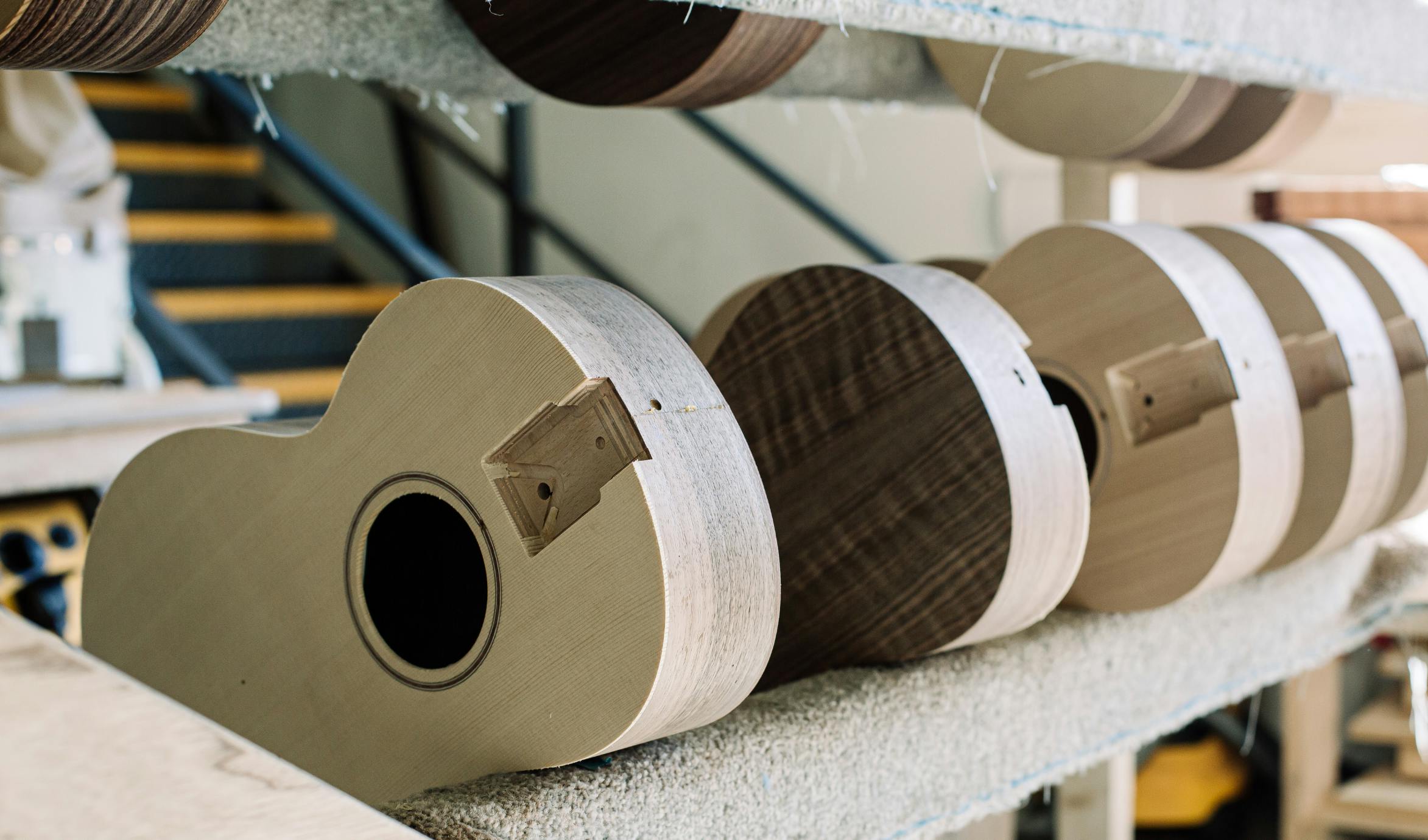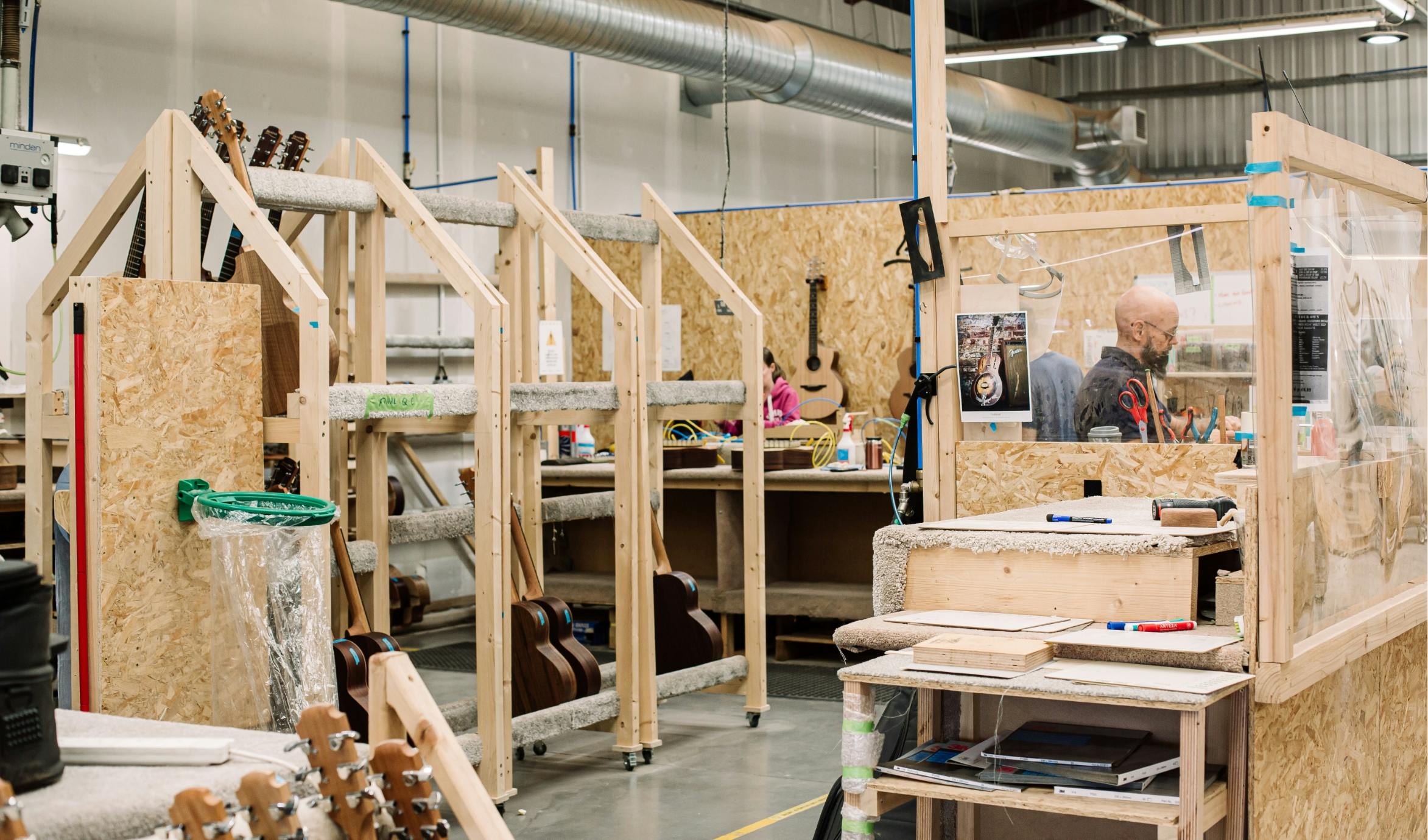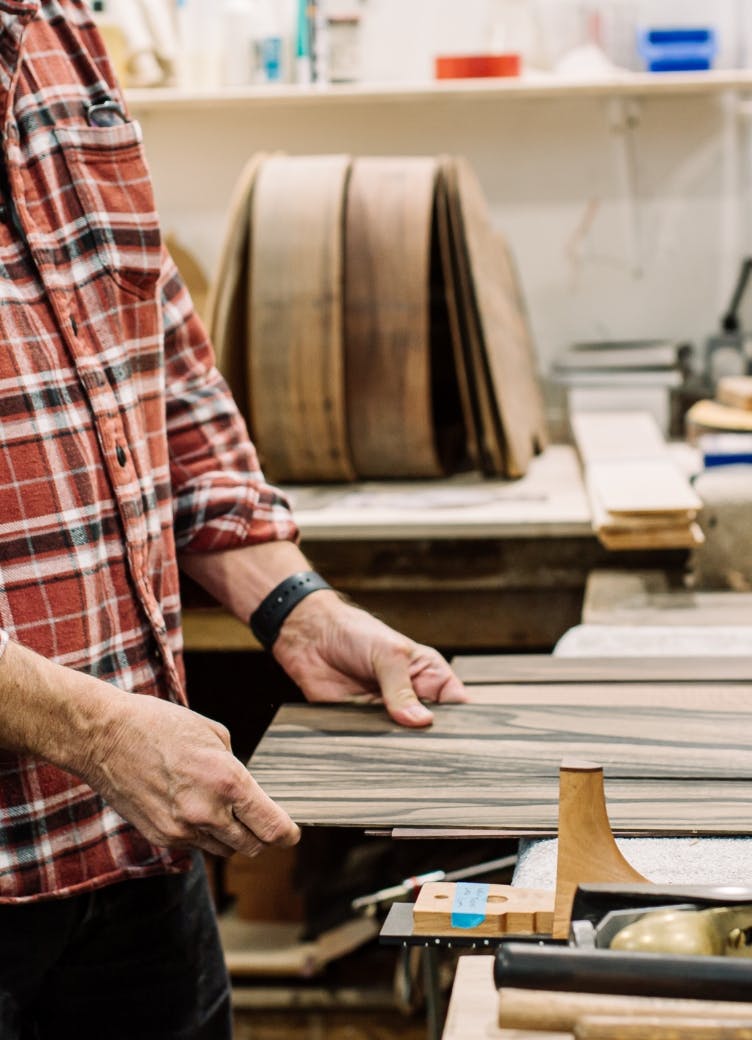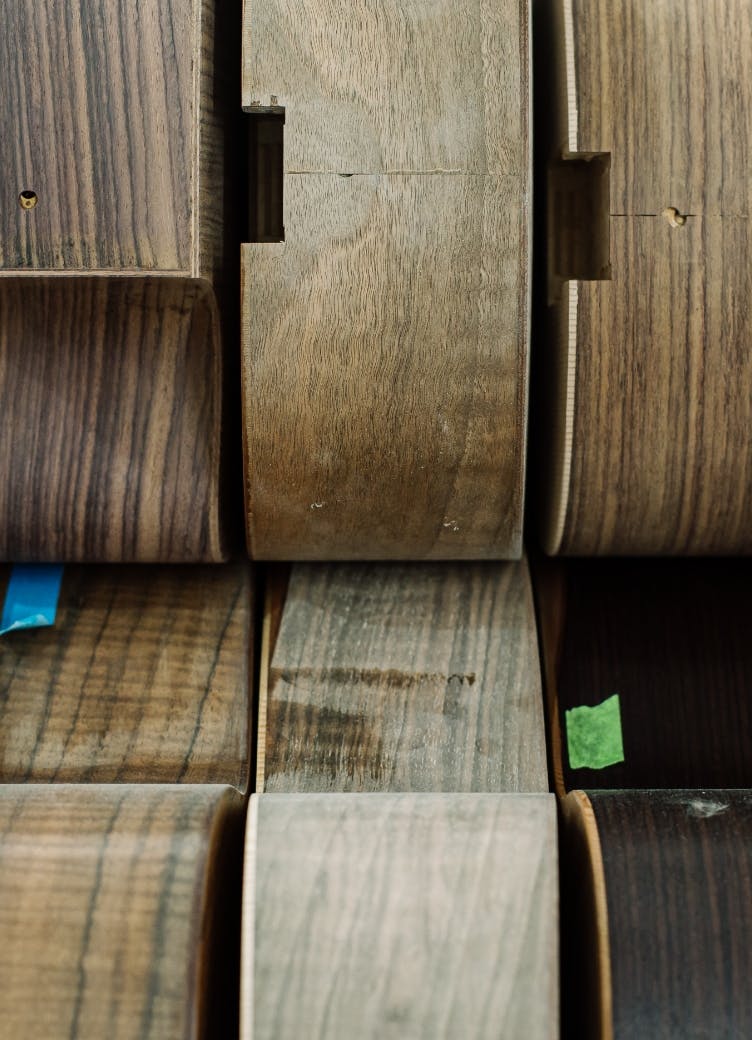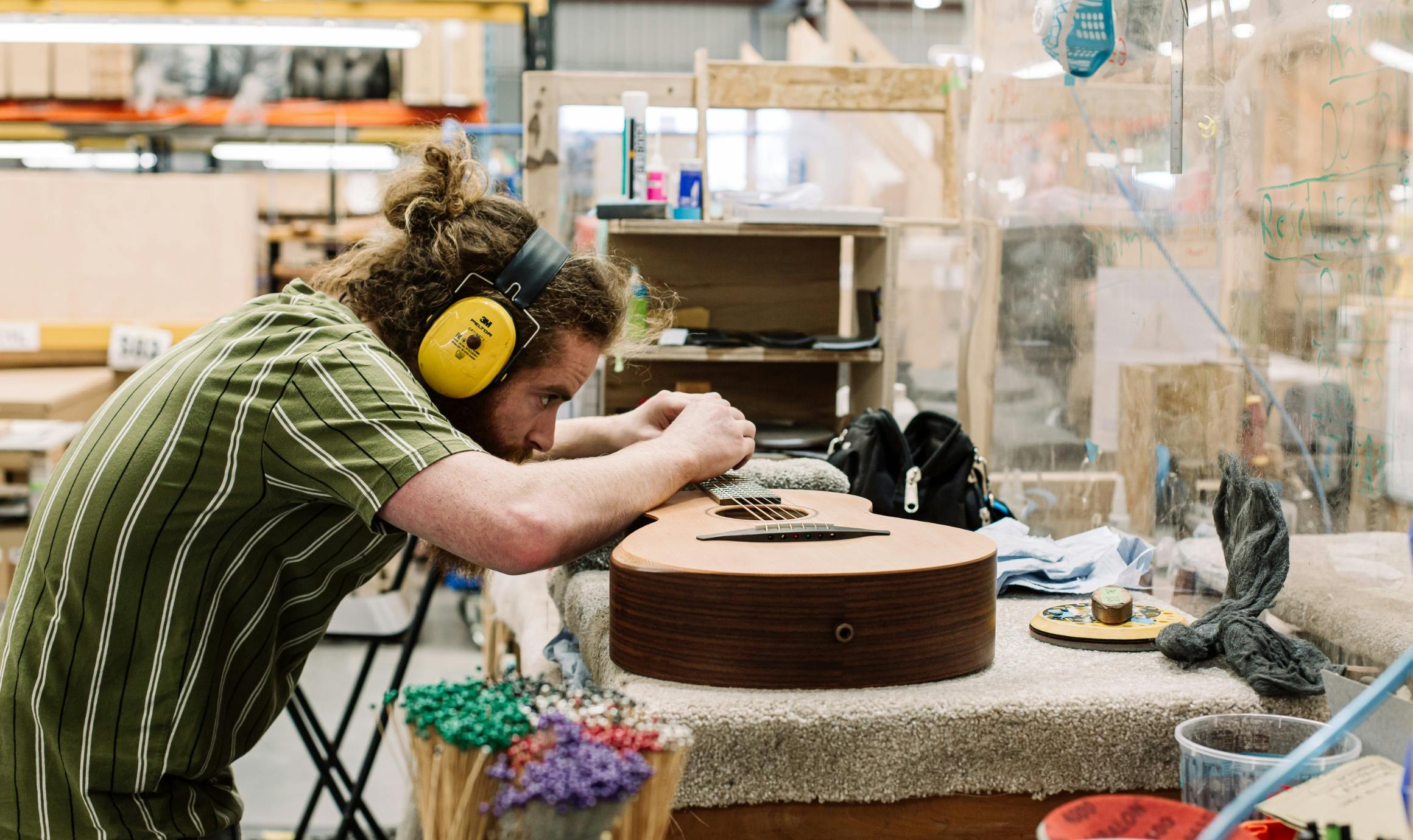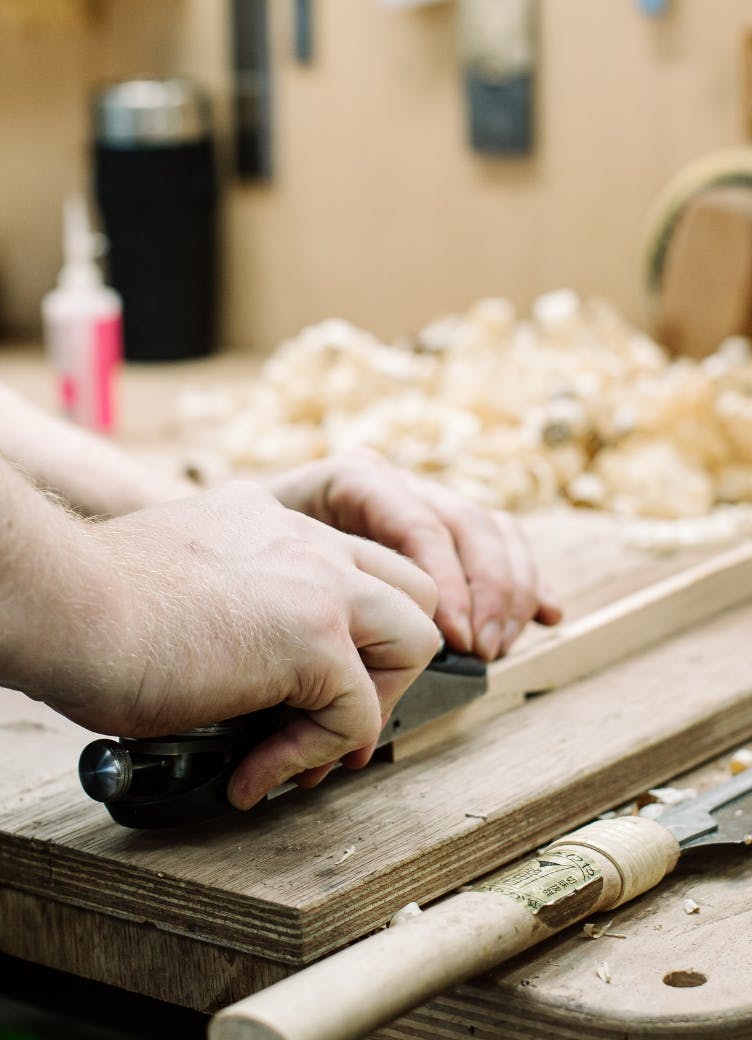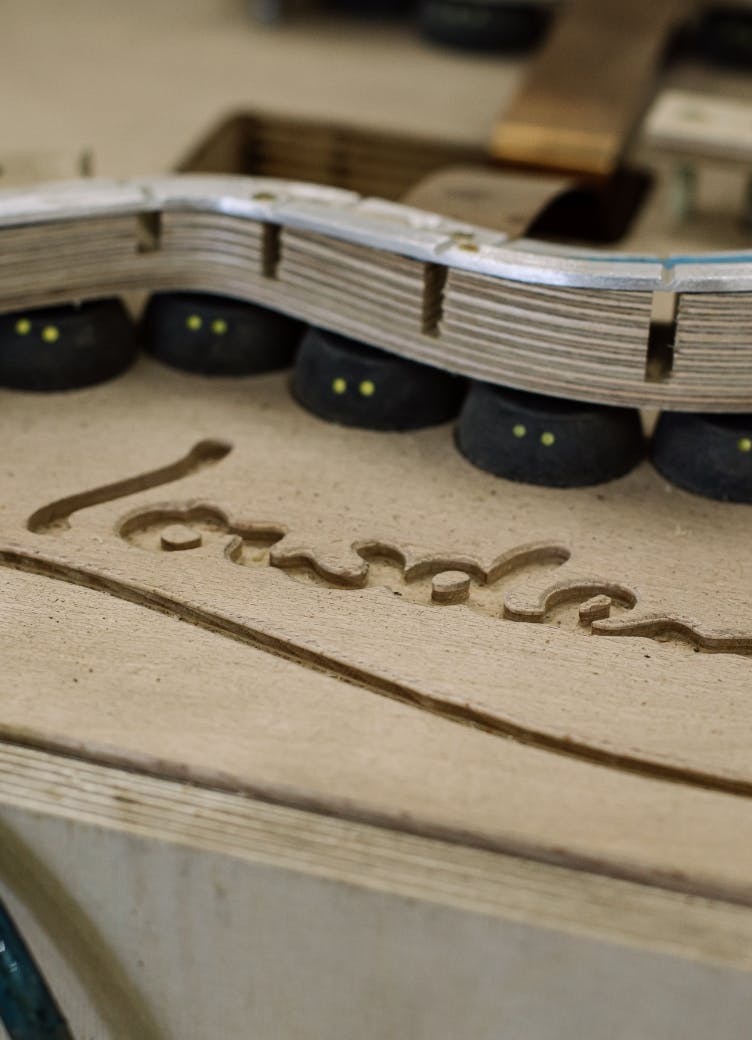It was an article in the New Musical Express about an Englishman called Tony Zemaitis, who had become a legendary guitar maker to the stars, that triggered George’s interest. If someone trained as a cabinet maker like Zemaitis could make guitars good enough for the likes of Clapton, he reasoned, maybe this was something he could pursue too.
Aided by a small handwritten booklet by English guitar maker John Bailey, ‘Making a Folk Guitar’, George began to experiment. It wasn’t plain sailing. “I didn’t have the woodworking skills then, I didn’t even know how to sharpen the tools,” he says. “The workmanship on those early guitars was very amateurish.”
But with advice from some leading guitar makers in England and a local teacher (since a lifelong friend), who helped develop his woodworking skills, George began to perfect his craft. “Even though the workmanship was comparatively poor, those early guitars sounded good,” he says. This was largely due to George’s determination to experiment with his own designs, particularly around the way the soundboard vibrates, rather than copy others
